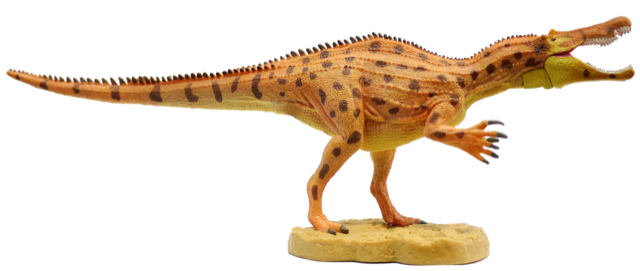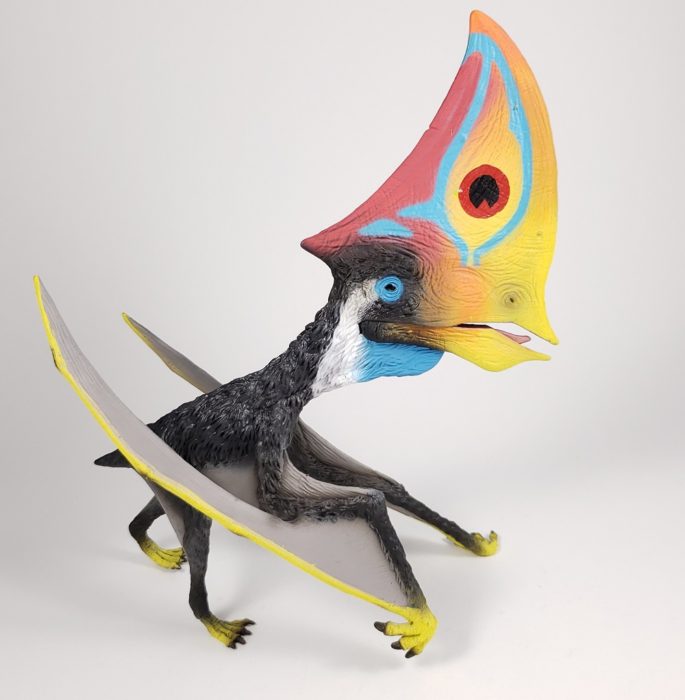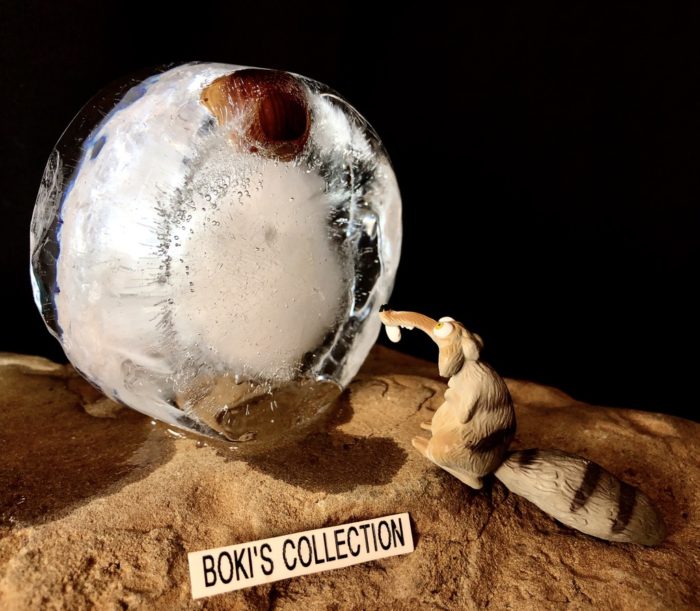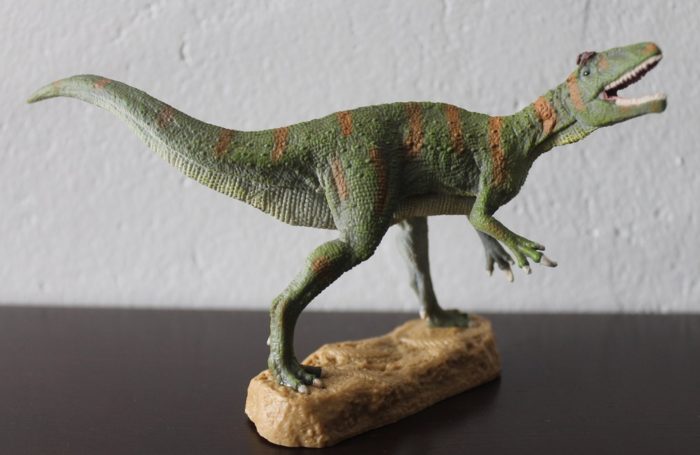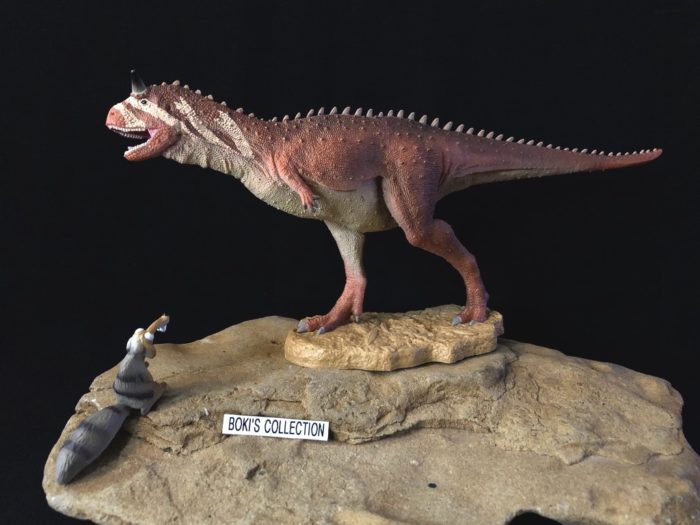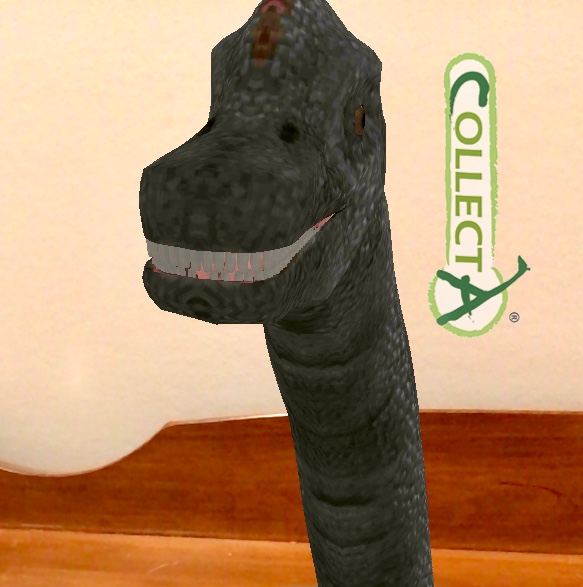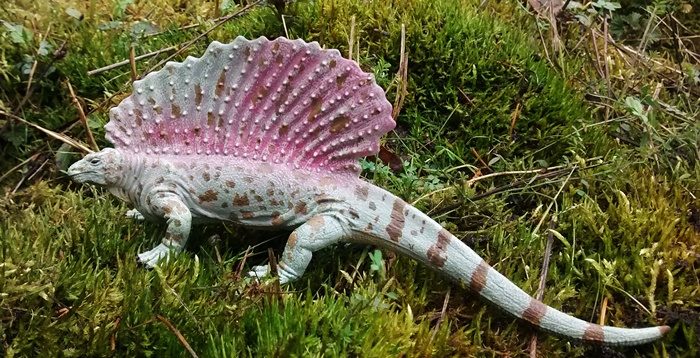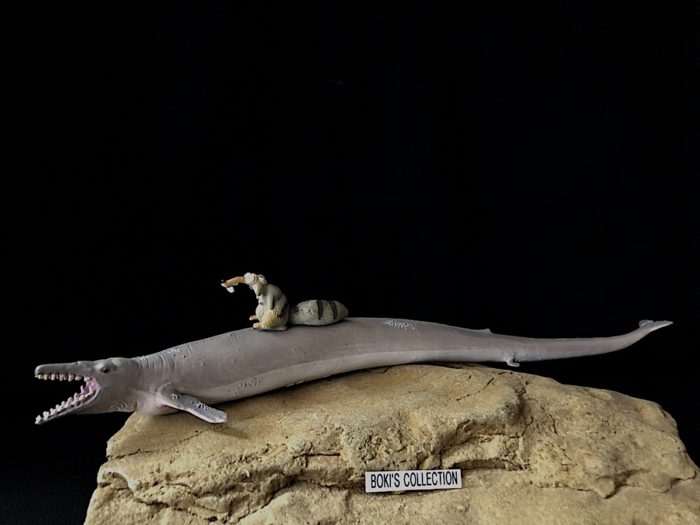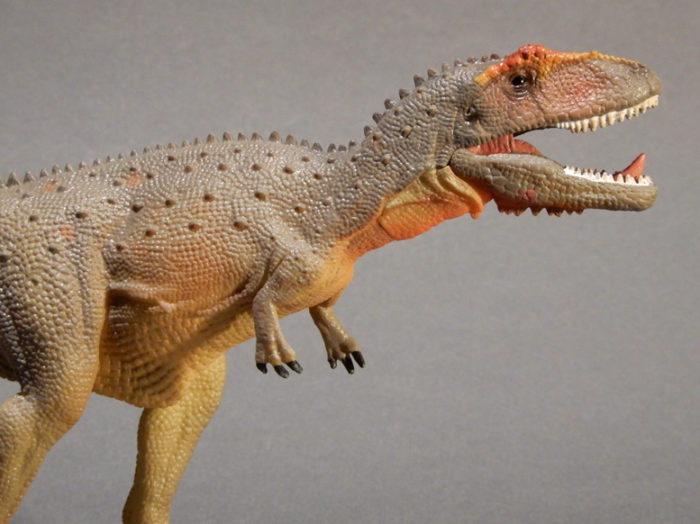Review and photographs by Patrx
To me, Baryonyx is the quintessential British dinosaur. Perhaps a more classic taxon like Iguanodon or Megalosaurus really deserves the top spot, but there’s something about Baryonyx that stands out in my mind as inescapably British, and I think this is very likely to do with the fact that, for a long time, the best Baryonyx toy available was the classic monochrome rendition produced by Invicta Plastics for the British Museum.

